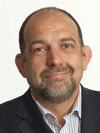Just how do you go about bottling that winning attitude? Let Nick Drake-Knight pick up the baton and run you through his formula for success.
In any business environment there are talented individuals who perform consistently above their peers. In call centres there are definite superstars who regularly top the lists when it comes to performance indicator measurement. They have an innate ability to achieve excellence. These ‘wizards’ apparently have a natural ability that is beyond us mere mortals.
What is it that makes them so special? Wouldn’t it be great if we could uncover what makes them successful?
“In call centres there are definite superstars who are regularly top of the pile when it comes to performance.”
The truth is these people have a structured approach to their ‘magic’, which they may or may not be aware of. They may be conscious of how they go about their wizardry or they may be ‘unconsciously competent’. Either way, if we’re to understand how they do what they do, we need to uncover the sequence of their thinking and actions. The best way to do this is to understand what they do in specific detail. This is known as modelling.
Modelling success
| What’s the background to modelling?
Modelling became popular after the explosion of neuro linguistic programming developed jointly by Richard Bandler and John Grinder in the 1970s. Bandler and Grinder were interested in the nature of excellence and set about studying the methods of successful therapists and ‘people changers’, including Fritz Perls (gestalt therapy), Virginia Satir (family therapy), Frank Farrelly (provocative therapy), and Milton Erickson (hypnotherapy). They found that by studying these masters in depth, they could gain an understanding of the methods and processes that contributed to their successes. It became apparent that some wizards know exactly what they do; they have an explicit structure or process they follow which they are consciously aware of. Others have absolutely no idea how they go about their business – they just have an intuitive ability that ‘feels’ like the right thing to do. What Grinder and Bandler did was to create an investigative model that helped uncover the specific components of the wizardry. In fact they called their first book ‘The Structure of Magic’ as a reflection of their analytical approach. |
Modelling requires more than simply understanding what wizards ‘do’. To get a good model of a successful strategy we need to know a number of things about what’s going on inside the mind of the excellent performer.
These factors can include:
- What the performer says to themselves prior to starting their ‘performance’ (their ‘self talk’)
- What the performer does with their imagination regarding what is about to happen
- How the performer prepares their body in readiness for what is about to happen, for example, breathing patterns, posture preparation and stretching
The most obvious way of finding these things out is to ask the performer what they do in readiness for a successful performance. To source this information it’s usually best to encourage the performer to imagine they’re about to perform and to be conscious of these factors as they prepare.
Some of the preparatory thought processes wizards have are weird! One call centre training professional I knew had an imaginary dimmer switch he used to turn up as he was about to introduce himsef in a meeting. He would ‘click’ it on and ‘turn up’ his performance just as he began. By modelling him, we both discovered what an effective method this is. I often use the technique myself now.
Super heroes
Another clever modelling strategy is to use the ‘super hero’ approach. Remember your favourite super heroes from your childhood – maybe Superman, Spiderman, Superwoman or Catwoman (my favourite)? What was it about them that made them perform as super heroes?
Check out this series of modelling questions:
Replicating success
|
- ‘What would I be doing if I was a really successful super hero?’
- ‘What do successful super heroes do?’
- ‘How do they operate and think?’
- ‘For me to be successful at being a super hero, what self-talk would I say to myself?’
- ‘What words would I use when talking to others?’
- ‘What tonality would I use?’
- ‘How would I use my body?’
- ‘What sequence of behaviours would I follow?’
- ‘How would I dress?’
- ‘What mental images would I use?’
- ‘How would I prepare?’
- ‘What would be the scope of outcome I would expect?’
These questions provide the basis for deciding how you’d operate if you were to act like a successful super hero. Notice how the answers relate to being positive, proactive and results-focused. You can feel the personal power beginning to build.
Now, go through the questions again and this time replace ‘super hero’ with ‘call centre super hero’ and experience what happens…
The structure-of-well-done-ness
Modelling success is valuable – especially when people don’t even know how they’ve done well. Call centre coaches can achieve massive performance shifts by helping colleagues recognise their ‘success strategies’. Think about the opportunities for coaching using these techniques in your call centre. Let me describe an example that we can all relate to: schoolwork.
Some years back my son Martin was in the midst of A-level coursework. I came home and set about asking him how he was getting on. The conversation went like this:
Dad: How’s your coursework going?
Martin: Ok.
D: Had any grades back recently?
M: Yeah.
D: Which ones?
M: Physics. I got an A.
D: Nice! How did you get that?
M: What do you mean?
D: What did you do to get an A?
M: Dunno. Just did.
D: Yes, but what specifically was it about your piece of work that got you the A grade?
M: Dunno really.
D: Who is your Physics teacher?
M: Woody.
D: Who?
M: Mr. Woods.
D: How about you ask him what it was that caused him to think your work was worth an A grade?
M: Ok, I will.
The next day Martin caught up with me…

Nick Drake-Knight was impressed by Mark’s customer service
M: I spoke to Woody, Dad.
D: Oh yes?
M: He said I got an A because I used the methodology he showed us, I used the equation he taught us, I explained my calculation and I presented the report in the format he suggested. He said if I did the next piece of coursework in the same way I’d probably get another A grade, too.
D: Great! That’s the Structure-of-Well-Done-Ness!
You may be curious. What are the Structures-of-Well-Done-Ness in your call centre? Get modelling and find out!
Nick Drake-Knight is an author and freelance writer.
Author: Jonty Pearce
Published On: 11th Jun 2007 - Last modified: 31st Jan 2025
Read more about - Call Centre Questions















